America’s Automotive Tribes: Their Rites, Revelries, Rituals and Rivalries
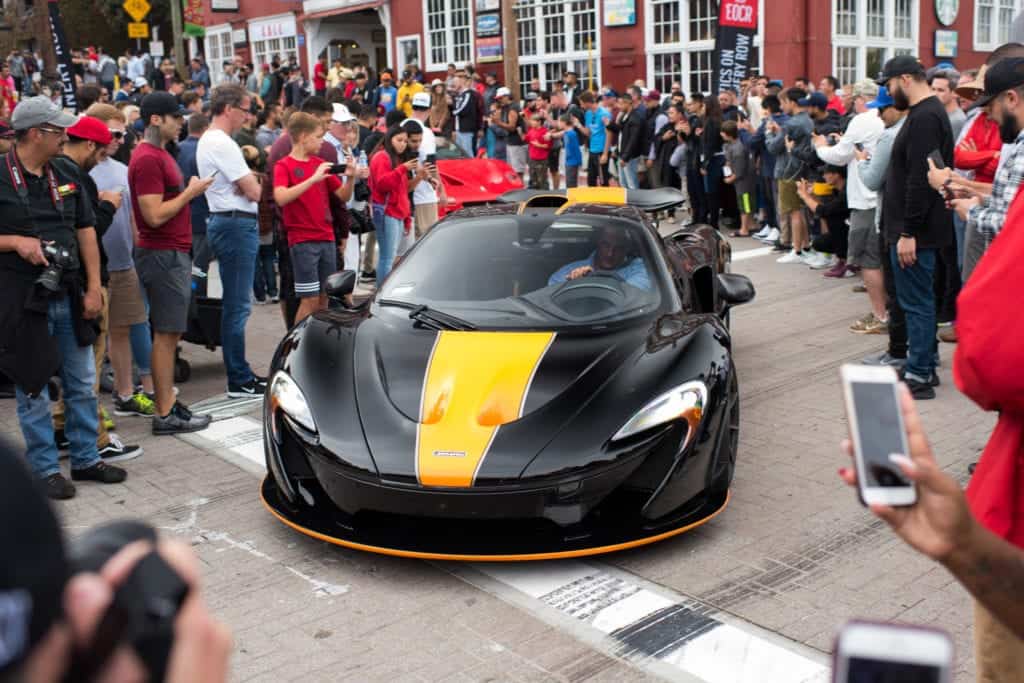
MONTEREY, Calif. — The Costanoan and Esselen Native American tribes from the 18th Century have long since departed this peninsula. More recently, the modern tribes who powwow here every August have decamped too.
These latter-day tribes include the Exotici, who worship high-horsepower and high-testosterone deities with such names as Koenigsegg, Lamborghini and Ferrari. The rival Classicarini tribe — whose leaders include shaman Wayne Carini — practices ancestor worship, venerating Pre-War Preservation, Post-War Grand Touring and other primitive but beautiful gods from the past.
Other modern clans that gather here include the Germania, the Italianos, the Brits and the wondrously weird Lemoni.
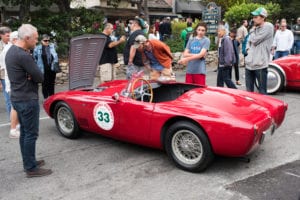
This powwow is Monterey Car Week, which has grown from a modest one-day event that started in 1951 to encompass nine days of high-revving, free-wheeling automotive adulation. The hundreds of thousands of people who convene here each August are viewed by outsiders as a monolithic horde of dipstick-loving, lockstep-thinking car crazies. But for those inside the big automotive teepee, the truth is more nuanced.
Many Classicarini regard the Exotici as nouveau-riche show-offs who buy modern $2 million-plus “hypercars” to flaunt their wealth. “It’s not about the way the cars race, or about the cars,” explained 71-year-old John Grosseto Orange County, Calif., proud owner of a classic 1955 Osca MT4. “It’s about young drivers with more money than brains. They buy the car because they can buy it, not because they really love the car.”
To Kris Singh, that view is about as relevant as hood ornaments. “I don’t have much use for old cars,” says the 39-year-old, Miami-area financial executive. “They might look cool, but a lot of them are junk.” Singh is a confirmed Exotici whose hypercar collection includes a 1,000-plus horsepower Koenigsegg that he drove during Hurricane Irma last year. “I figured if the hurricane got too bad I could outrun it,” he declared at Car Week’s Quail Motorsports Gathering.
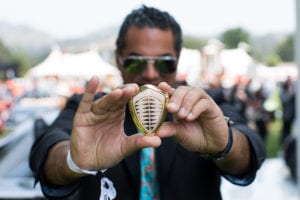
“The Quail, A Motorsports Gathering,” referred to simply as ‘The Quail,’ is the happy hunting ground for the Exotici tribe. It’s held on the Friday of Car Week on the grounds of the Carmel Valley’s Quail Lodge (not to be confused with the nearby Quail & Olive that sells artisanal vegan bacon olive oil). The Classicarini sacred gathering is the Pebble Beach Concours d’Elegance, held two days later, the closing Sunday of Car Week, on the 18th fairway of the famed golf course.
Those who attend these conclaves have been studied over the years (really) by academics intrigued with modern tribal rituals. “Some features of the world of old cars bear a resemblance to religion,” wrote the University of Rochester’s Dale Dannefer in a 1980 study of automotive enthusiasts. “One consequence of the enthusiast’s passion is the veneration — indeed, the sacralization of the old car.”
Here’s a look at the revelries, rituals and rivalries of the modern-day automotive Tribes of Monterey.
The EXOTICI
The Quail is proudly nouveau and unabashedly riche. Entry is $650, that is if you’re already on the organizer’s list and you’ve been invited to purchase one of the 5,000 tickets available. However, you can bypass the list and the traffic if you opt for the $3,000 per person helicopter-in package.
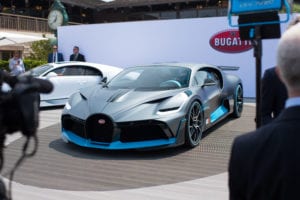
At this year’s Quail Bugatti unveiled its new Divo model, sporting a price tag around 5 million euros — about $5.7 million. For that you could buy both of the more-pedestrian Bugatti Chirons that shared the stage with the Divo. Only 40 will be made, and all are already presold. Bugatti says a large number of the future owners attended the event.
The biggest lines at The Quail weren’t at the Divo stand. They were over at the caviar and oysters tent, which sat conveniently close to the champagne bar. Themed food tents, included with the ticket price, were pitched around the grounds, offering such delicacies as Salt and Pepper Prawns, Marinated Tofu Lettuce Cups, Wok Blistered Long Beans with Fermented Chili and Tempura Cones with Pickled Vegetables. You know, the usual car-guy stuff.
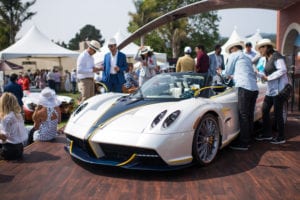
Italian hypercar-maker Pagani displayed its Huayra Roadster, named after the wind god of the Quechuan Native American tribe. The car, one of 100, is already sold out, but it wasn’t the most exclusive thing on the stand. That distinction went to the Airbus ACJ319neo ‘Infinito’ private jet (in model form), featuring an interior designed by Horatio Pagani with the same quilted leather and exposed carbon fiber that distinguish his road cars. It’s for when a normal Gulfstream just won’t do.
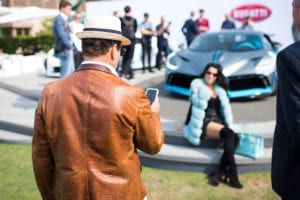
The Quail is the Formula One of people watching. Flash and restraint coexist in the form of Balenciaga designer dresses and $1,000 Amiri Bandana MX1 jeans (available, appropriately, from Farfetch.com). The international crowd includes enthusiasts from the Middle East, Asia, Europe and South America.
“Everybody there is looking ‘so Quail,’ but they don’t know s— about cars,” sniffs Grosseto. To be fair, though, many people at The Quail did seem to know about pound-feet of torque as well as designer sunglasses.
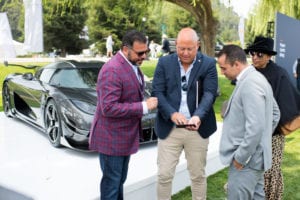
Christian Koenigsegg held court, chatting with his vehicles’ owners and posing for pictures with eager-eyed wannabes. When he started his hypercar company in 1994 he named it after himself, just like Henry Ford and Ferdinand Porsche. Koenigsegg now makes about 20 cars a year, but is hiring more people to boost production 30 annually because the company has a four-year waiting list for its cars. “That’s not good for us or for our customers,” Koenigsegg explained.
Indeed, competition is growing in the high-altitude hypercar air. Consider Rimac Automobili, which is 10% owned by Porsche and is based in Ljubljanska, the capital of Croatia. To buy the new Rimac C-Two “pure electric hypercar,” you must both pronounce Ljubljanska correctly and fork over $2.1 million, which might prove easier. For that you get a car with “all wheel torque vectoring” with 1,914 horsepower that, says Rimac, goes from zero to 60 miles an hour in 1.85 seconds.
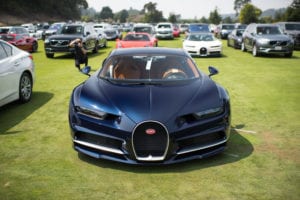
That time tops the Bugatti Divo, with a zero-to-60 of (sniff) 2.4 seconds. But acceleration and top-speed statistics aren’t the point of the Divo, said Stephan Winkelmann, President of Bugatti Automobiles S.A.S., adding: “Happiness is not around the corner. It is the corner. The Divo is made for corners.” To that end, the car was named for Albert Divo, a French driver for Bugatti who won the Targa Florio race in 1938 and 1939.
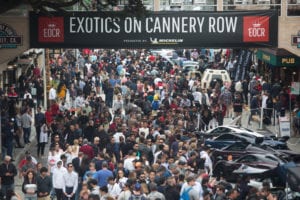
The encore to the Quail came the next night, Saturday, when many of the exotic cars displayed there cruised (at painfully slow speeds — even Koenigseggs can’t outwit Car Week traffic) over to Monterey for another hypercar event, Exotics on Cannery Row. The place was immortalized in John Steinbeck’s 1945 novel Cannery Row, in which he portrayed the lives of Depression-era workers and wrote: “Most of the babies of that period were conceived in the Model T Ford, and not a few were born in them.”
Conceiving a child in the Ferraris, Lamborghinis, Porsches, Paganis, McLarens and other hypercars displayed at Exotics on Cannery Row might have proved more challenging. The crowd’s raucous enthusiasm, though, indicated the ambient testosterone was little changed from Steinbeck’s day.
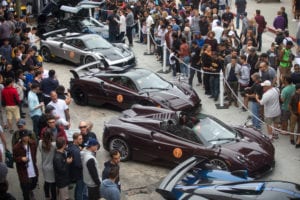
Exotics on Cannery Row is a free event, unlike The Quail. The crowd is younger, louder, more given to beer than champagne, and more smitten with hot tattoos than with haute couture. When the cars drove onto Cannery Row — most of them arriving in brand-specific posses — the sight and the gutteral sound of revving engines was captured by a thousand cell phones held high in the air, like lighters at a capitalist Woodstock. The ritual social-media uploads instantly followed.
Among those attending was “Wild Bill” Hill, as he calls himself, who every year treks from Roseville, Calif. — northeast of Sacramento — to Monterey for Car Week. Hill’s eclectic car collection includes a 2005 Panoz Esperante, a low-volume specialty sports car made in Georgia, and a chopped-off Volkswagen bus.

Wild Bill owns and runs (you guessed it) a tattoo shop, whose website says, “We encourage our clientele to get involved in the creation of their sacred and permanent markings.” Hill loves hypercars but doesn’t attend The Quail or Pebble Beach. “They probably wouldn’t let me in,” sniffs Hill, whose arms display plenty of the sacred and permanent markings that he sells. “There’s probably a dress code, right?”
The CLASSICARINI
Actually, there isn’t a formal dress code at either The Quail or the Pebble Beach Concours d’Elegance, the original Car Week event, always held on the final Sunday of the week. But Wild Bill might be forgiven for his misconception, given Pebble Beach’s sea of blue blazers, chinos, dirty-buck oxfords and panama hats. The Pebble Beach crowd is old wampum vs. The Quail’s new wampum.
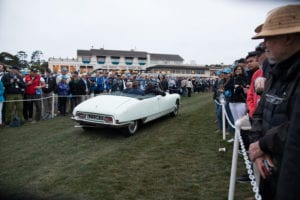
Attendees pay $375 per ticket — about half of The Quail’s price — with no food or drink included unless they buy a hospitality package costing twice as much. The mid-day crowds are huge, so the Classicarini Cognescenti arrive at 6 a.m. for the “Dawn Patrol” parade of cars onto the sacred 18th fairway. What counts here, unlike at The Quail or Cannery Row, isn’t horsepower, but heritage.
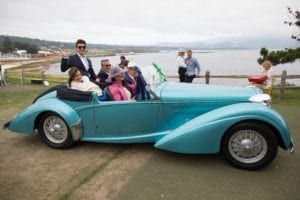
Entrants in the Postwar Custom Citroen class typically weighed in at the standard 71 horsepower, though the 1966 DS 21 Chapron Le Leman Coupe entrant boasted an enlarged engine with (gulp) 109 hp. It wouldn’t scare a Koenigsegg or a McLaren, but the two-tone car did win a Best in Class award.
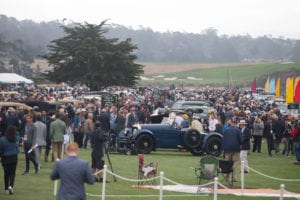
There were two classes — Pre-1955 and 1955-1960 — to celebrate the 70th anniversary for another featured marque, Osca. The classic roadsters weren’t high on horsepower either (about 130 tops), but their lightweight bodies let them outrace more powerful cars in their day. Equally important to the Classicarini, Osca’s heritage includes the Maserati brothers, who launched the marque after having to sell their eponymous Maserati brand. The brothers were brilliant engineers but lousy businessmen.

The gathering of Oscas showed Pebble Beach’s unique primal pull on Classicarini owners of rare cars or marques. For the Concours’ 2011 display of Ferrari 250 GTOs, 22 of the 39 still-existing models showed up — more than $1 billion of classic Ferraris at today’s values, all perched on a ledge overlooking the Pacific Ocean. For this year’s Concours, Oscas journeyed from Europe, Israel and Japan.
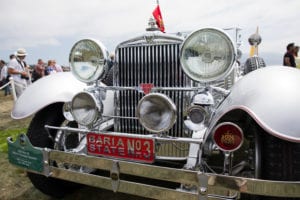
The two classes of Motor Cars of the Raj featured custom vehicles built for the Indian potentates of the British Empire. The 1927 Rolls-Royce Phantom owned by Maharaja Gaj Singhji of Marwar-Jodhpur sported dark blue “purdah” glass to ensure the privacy of the female royals. The class winner was a 1931 Cadillac Boattail Roadster Pininfarina with a V16 engine that served as the Maharaja of Orchha’s tiger-hunting car. (The car probably scared the poor beasts to death.)
This year’s Concours got adventuresome, in Pebble Beach terms, by adding a “Eisenhower Era Dream Convertibles” class. Among them: a 1957 Chrysler Imperial Crown Convertible and a 1959 Cadillac Eldorado Biarritz, which had the largest tail fins ever appended to a vehicle that didn’t fly. It won Best in Class.
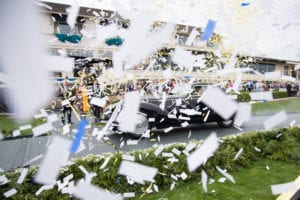
However, only one post-war car has won Pebble Beach’s prized Best in Show award in the last 50 years. The Concours’ Classicarini heart lies with Prewar coachbuilt cars. Thus this year’s Best in Show was a 1937 Alfa Romeo 8C 2900B Touring Berlinetta with Superleggera coachwork. When it crossed the winner’s ramp, showered in confetti, the appreciative Classicarini let out a subtle and civilized war whoop.
THE NATIONAL CLANS
Both the Exotici and Classicarini tribes contain various national clans. The Italianos love Ferraris, ancient and modern, and sniff at the Germanians. “Porsche designers are the laziest designers in the world,” explained Tom Thinesen of Sunnyvale, Calif. “Every year they change just one line by just one inch.”
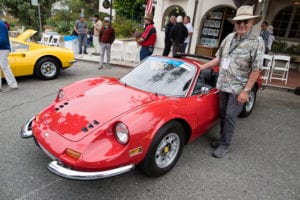
Thinesen displayed his red 1972 Ferrari Dino 246 GT at Concours on the Avenue — a free, laid-back warm-up to The Quail and Pebble Beach — on Carmel’s main drag, Ocean Ave. It’s a venue where stereotype meets reality: guys look at cars while ladies shop at the Girl-Lee clothing boutique or the Kris Kringle Carmel Christmas store before lunching at the A.W. Shucks Oyster bar.
The Dino, which he has owned nearly 40 years, “is one of the most beautiful objects anyone has ever sculpted out of sheet-metal,” Thinesen explained. Sometimes he and his wife, Trish, just sit in their garage with a cocktail and look at their Dino. “There aren’t too many cars you can do that with,” he added. Or too many wives willing to do it, one suspects. The car’s license plate is TNT Toy — for Tom and Trish’s Toy. Later in the week, Italian cars have their own special event. Dinos, along with other Ferraris, Maseratis and Alfa Romeos, are celebrated at Concorso Italiano.

Meanwhile the Germania — a confederation of Porsche, Mercedes-Benz, Audi and BMW worshippers — disdain Italiano flash for their own signature Car Week events: The Porsche Werks Reunion and Legends of the Autobahn. At the Werks Reunion, Pascal and Marielle Giai, French emigres, parked the Porsche 356 they bought 22 years ago in the Porsche Corral. “When I went to my first Ferrari meeting, I didn’t feel like I belonged,” Pascal recalled. “At a Porsche show, we feel we’re all on the same level.”
At Legends of the Autobahn, David Robinson of Sebastopol, Calif. showed his 1964 Mercedes 190C. “Cars like this one are meant to be driven on a daily basis,” he explained. “A Ferrari, I don’t think, is a ‘daily driver’ for your shopping.” German practicality, indeed.
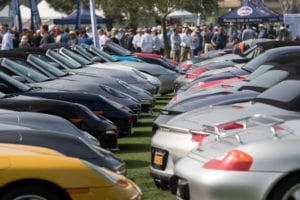
A bevy of Porsches at the Werks Reunion Monterey. Photo: Mike FialaNext year will bring the first Car Week Concours for British cars, whose fans long have envied the Germania and Italiano events. “It’s about goddamn time,” declared Bill Hiland of Morgan Hill, Calif., who is organizing the Rule Brittannia Concours. “I mean, how many red Ferraris can you look at?”
THE SMALLER TRIBES
The Holy Roller Tribe’s ritual is held at the historic Carmel Mission, which was founded by Fr. Junipero Serra in the late 18th Century to convert Monterey’s pre-automotive tribes to Christianity. There, the local Catholic bishop walks among the cars — an ecumenical mixture of Exotics and Classics — and sprinkles them with holy water. It’s distilled holy water, he explained, so no sinful stains will mar the carefully buffed bodies of the cars.

But Car Week’s strangest tribe is the Lemoni. Their event — the Concours d’Lemons, held the day before the Pebble Beach Concours — celebrates the bad, the worse and the ugly. This year’s deplorables included a 1958 pale yellow Edsel station wagon that once appeared on television’s ancient Donna Reed Show. Classes for entrants included ‘Unmitigated Gaul’ for French vehicles and ‘Rust Belt American Junk’ for Detroit iron.
The Worst in Show Award winner was an two-toned, crimson and cream, 1977 AMC Gremlin, highly modified in-period with swooping front fenders and a Rolls-like grille to resemble another car of dubious taste: the Zimmer. Capping the custom coachwork were three large vertical opera windows on the chopped-off back end.
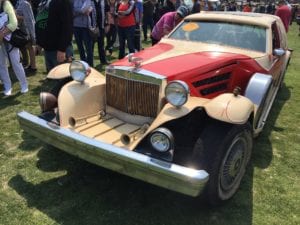
Its owner, James Callahan of El Paso, Texas spotted the car on Craigslist and bought it specifically to compete in the Concours d’Lemons. “I love this show, the whole concept of it,” explained Callahan, who also has taken Best in Class Awards in past years at the Pebble Beach Concours. (With other cars, to be sure).
His Gremlin’s final touch was a Texas license plate that read MAGA. It stood for “Make Automobiles Great Again,” of course.
Michael Fiala contributed to this article.